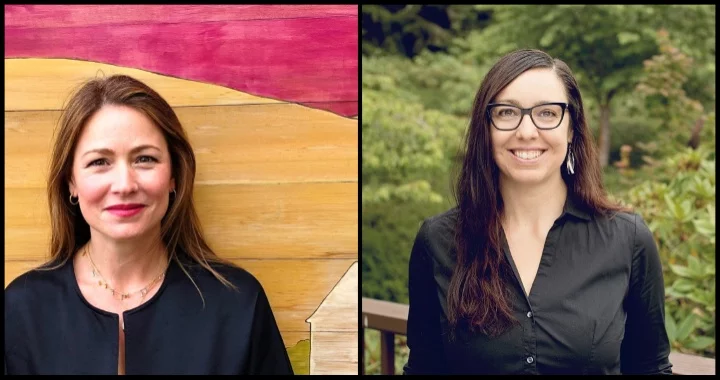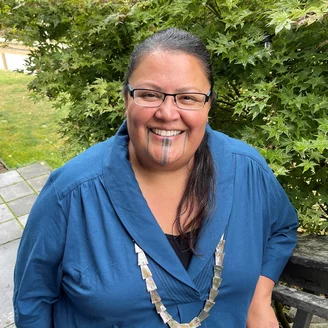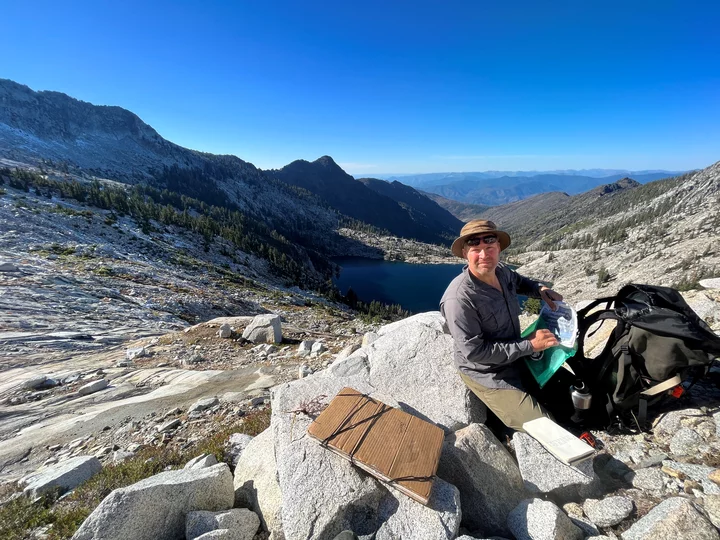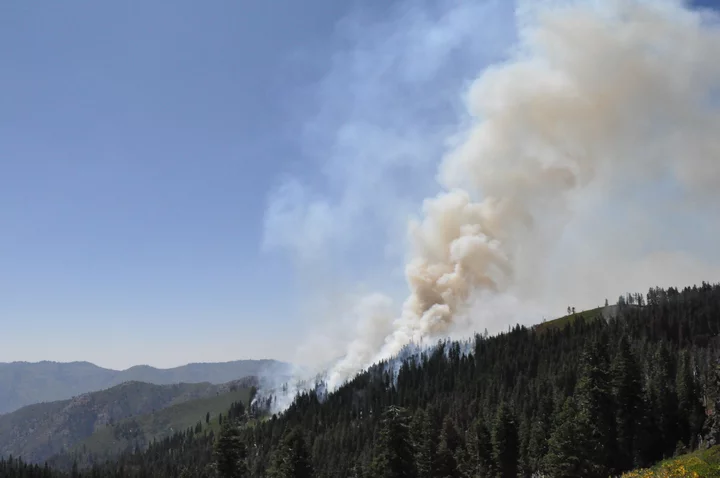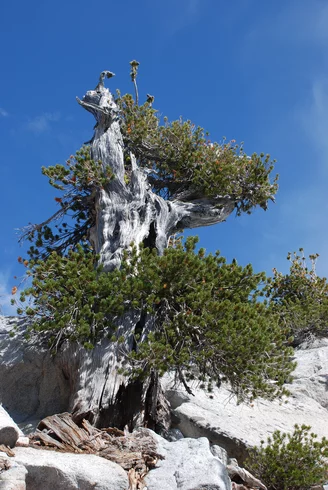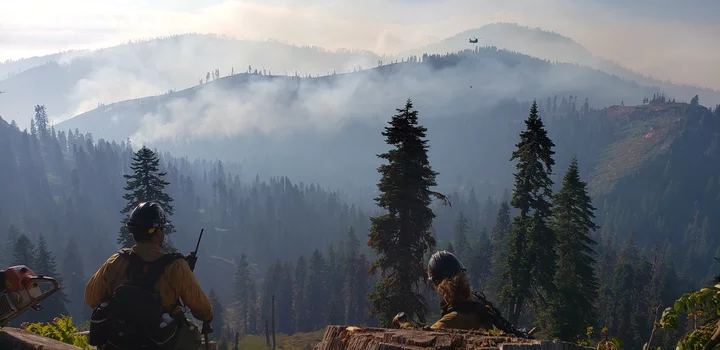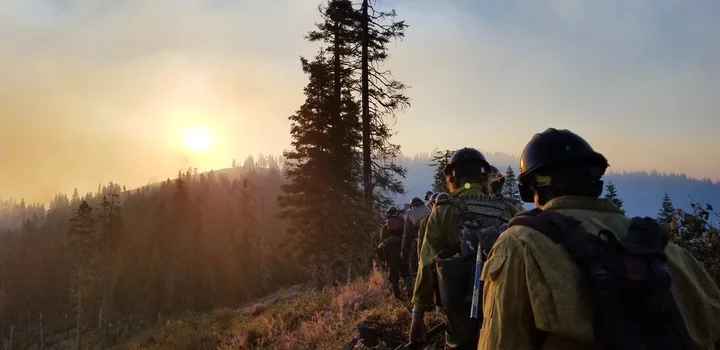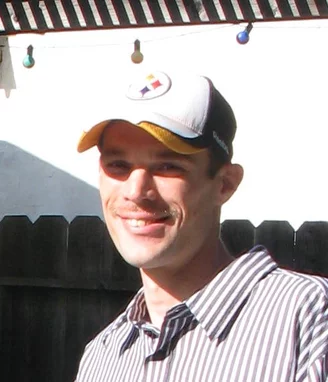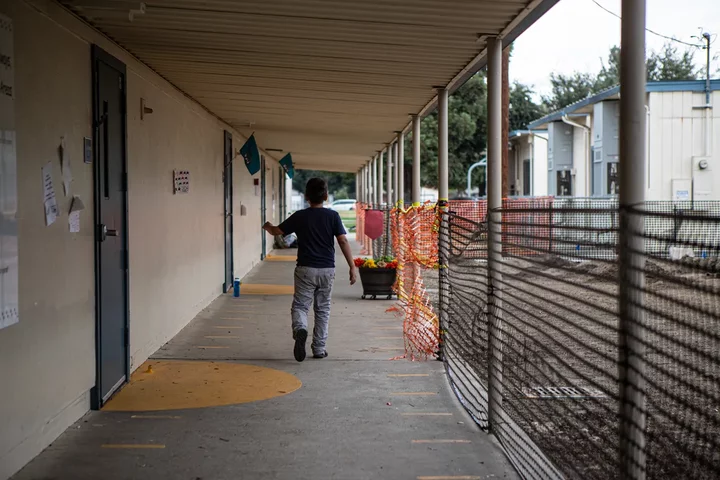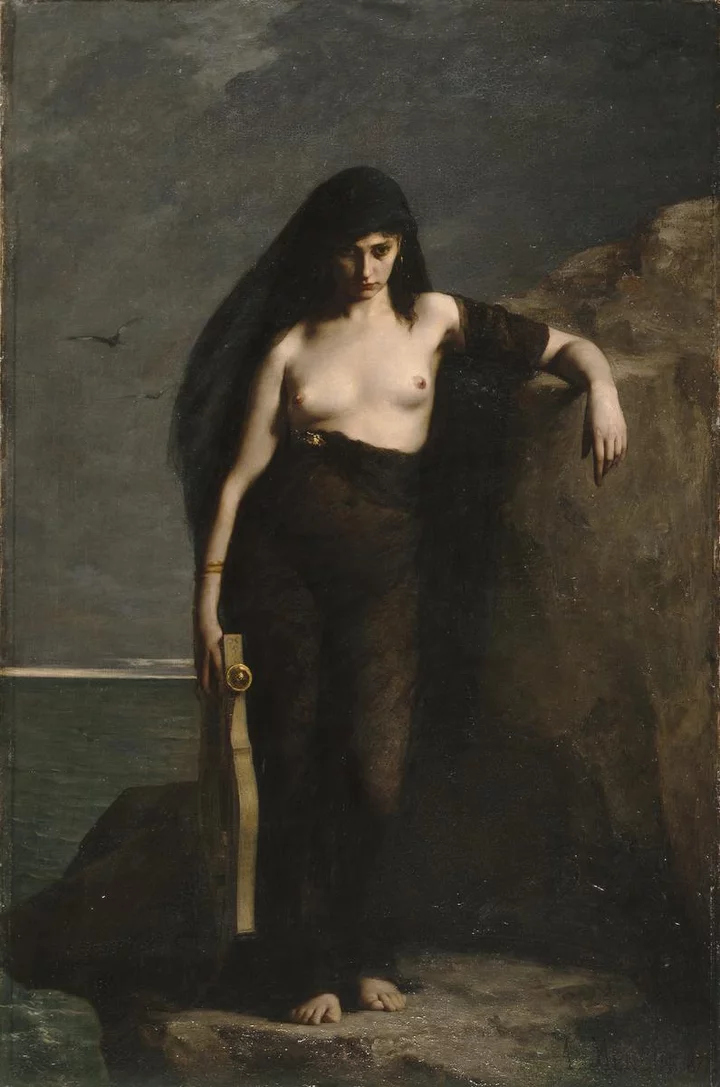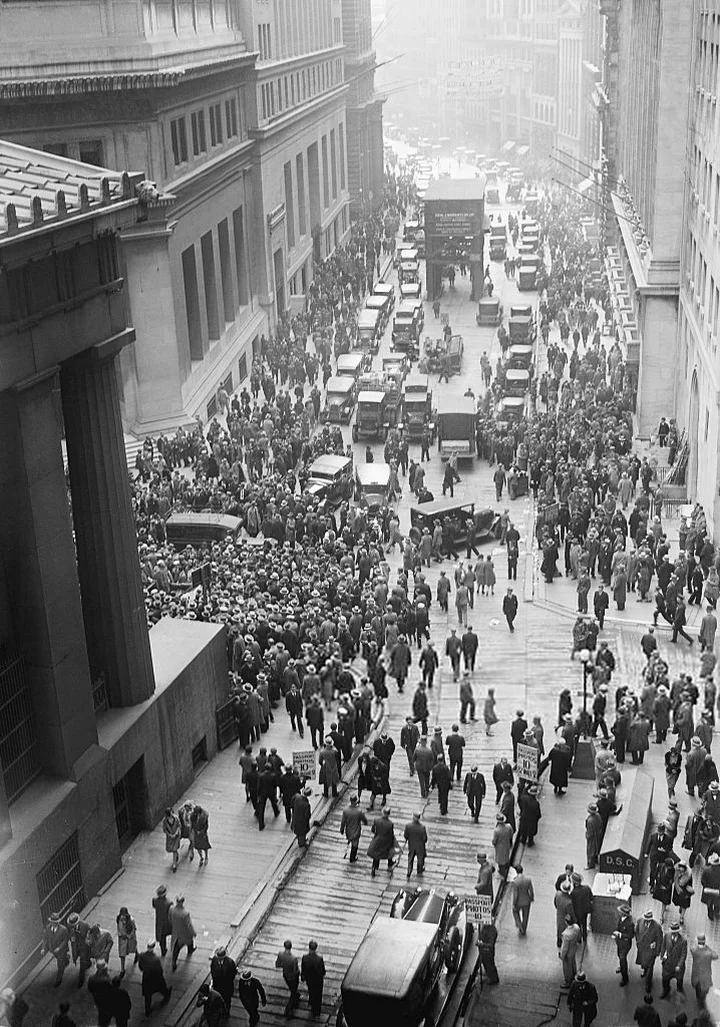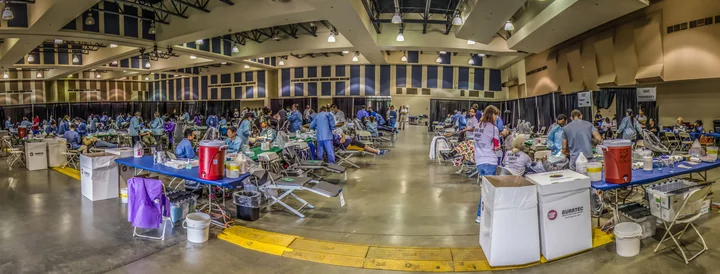Humboldt Area Foundation Board Announces Change of Leadership
LoCO Staff / Monday, July 1, 2024 @ 11:39 a.m. / Business
Lipper (left); Dronkers. Photos: HAF.
Press release from the Humboldt Area Foundation:
The Humboldt Area Foundation and Wild Rivers Community Foundation Board of Directors is excited to announce important changes in the organization’s leadership serving our beloved region:
Our Chief Executive Officer, Bryna Lipper, has been accepted to a distinguished PhD program at Carnegie Mellon University with a focus on climate change and social jus ce in rural and Indigenous communities. Her research will involve this region’s environmental and political history and pose future scenarios for climate justice. As such, Bryna will be stepping out of day-to-day management and assume the role of Chief Innovation Officer where she will collaborate at national and state levels to further partnerships, research, and public policy related to philanthropy supporting our Pacific Redwood Region.
Sara Dronkers will begin acting in the role of Chief Operating Officer immediately. Sara, with over 20 years of work experience at HAF+WRCF, has been involved in all functions of the Foundation’s remarkable growth and performance, from grantmaking, to finance, to donor development. Sara begins to oversee executive management in a me of the foundation’s history where grantmaking to the community is at record high levels, including a projected $12 million in the upcoming 2024/25 fiscal year. Sara has served as Chief of Staff of the foundation since 2020.
This growth is further grounded in the official appointment of Paula (Pimm) Tripp-Allen as Vice President of Programs, Community Partnerships, and Tribal Relations at the Foundation. Pimm will lead the organization’s grantmaking efforts, program and affiliates, and regional initiatives. Pimm, of Yurok and Karuk ancestry, will also continue leading Native American and Tribal Naion relations, and the Foundation’s activities furthering justice in Native communities. Long affiliated with the foundation, Pimm began more than two decades ago on staff for the Native Cultures Fund, then served on the Board of Directors for many years. Immediately prior to serving as Vice President, she served as Senior Advisor to the CEO for the past 2 years.
In addition to its strong vote of support for this leadership structure for the Foundation’s evolution, the Board of Directors voted unanimously to extend the terms of its Board Officers—including Chair Charlie Jordan, Vice Chair David Finigan, and Secretary Raquel Ortega—and its Committee Chair positions for up to a year for continuity to the staff and clarity to our community. Board Chair Jordan and Vice Chair Finigan shared the sentiment that:
“The board is excited that Bryna will continue to provide invaluable leadership and creativity to the foundation while she undertakes her doctorate program. Our foundation is in an excellent place as a result of the strategic work she accomplished during the past five years that has elevated our region statewide and nationally. The board is likewise extremely confident in and fortunate to have Sara Dronkers step into the top management role at the Foundation, given her many years of experience, community knowledge, and operational acumen. With our former board colleague Pimm Tripp-Allen as Vice President directing our program and grantmaking activities, we are certain that our highest values of service, equity, and responsibility within our region will prosper. The board also has the deepest gratitude and admiration for Sarah Millsap, Vice President of Finance and Administration, who steadfastly directs our fiduciary, investment, and budgetary duties with unparalleled ability and oversight; and Vice President of Advancement, Gina Zottola who provides the Foundation’s inspiration for charitable giving, legacy, and philanthropic partnerships that support our region’s goals and dreams. The Humboldt Area and Wild Rivers Foundation could not be be er poised for the future with this leadership team. The Board is confident that these leadership changes will fortify the Foundation’s commitment to growing a thriving, just, healthy and equitable region. We are poised for a future filled with opportunity and growth, guided by a team of inspiring leaders.”
Signed,
Charlie Jordan – Chair
David Finigan – Vice Chair
Raquel Ortega – Secretary
And the entire Board of Directors of Humboldt Area Foundation and Wild Rivers Community Foundation
BOOKED
Yesterday: 10 felonies, 4 misdemeanors, 0 infractions
JUDGED
Humboldt County Superior Court Calendar: Today
CHP REPORTS
No current incidents
ELSEWHERE
Mad River Union: Cal Poly buys Sun Valley site for $5M
Mad River Union: ‘Devastating’ hunger, homelessness impacts rattle Supes, NGOs
Mad River Union: Fresh flex for cannabis ‘micro-business’
Mad River Union: Council hears of looming food and housing crises
Fire, Flood and Ice: Local Scientists Document Climate Threshold Crossed in the Klamath Mountains
Gillen Tener Martin / Monday, July 1, 2024 @ 11:05 a.m. / Environment
Justin Garwood in the Trinity Alps, fall 2022. Photo: Justin Garwood.
On a sweltering October day in 2022, Justin Garwood tucked a piece of glacial ice into his sleeping bag, carefully arranged clothes around the bundle, hiked 10 miles out of the Trinity Alps and stuck the chunk in his freezer, where it remains today.
“I don’t know what to do with it now,” he admitted.
The Trinities were once home to the lowest altitude, western-most glaciers in California: the Grizzly and the Salmon. But in 2015, after years of severe drought, the Grizzly Glacier broke apart and the Salmon disappeared entirely (or “went extinct,” in science-speak).

The now-extinct Salmon Glacier in the Trinity Alps in 2009 vs. 2015. Photos: Justin Garwood.
And in the fall of 2022 the Grizzly went extinct too.
“A certain climate supports glaciers, and we’ve left that,” said Garwood, an environmental scientist with the California Department of Fish & Wildlife, who described their loss as a “threshold crossed.”
California’s climate has long been “variable” in terms of precipitation (rain and snowfall), meaning swings from bone-dry to drenched-wet are nothing new. But warming is pushing that variability into overdrive, flatting four seasons into two: flood and drought, with drought growing ever longer.
“Some people call it the ‘climate vice,’ things are being put in a vice and squeezed,” Garwood said, “Snow is melting off sooner and coming later, so there’s less water on the landscape.”
An avid backpacker in the Klamath range and subranges (Siskiyous, Trinity Alps and Marbles) and co-editor of The Klamath Mountains: A Natural History, Garwood has been studying the effects of climate change in the mountains for years – as this Backpacker article chronicles. And, having grown up in Lewiston (east of Weaverville, west of Redding, at the edge of the Trinity Alps), he’s seen the region’s precipitation patterns change throughout his lifetime.
“When I was growing up, we used to get some decent snowstorms,” he said, “It wasn’t a big deal if two feet of snow fell at 2000 ft elevation.”
“Today, that’s a big deal,” he added.
Now, Garwood and climate scientist John P. O’Brien (also Trinity County-raised) are working on research that tells the story of the Grizzly’s final years – a sort of epilogue to glacial ice in the Klamath. But Garwood made clear that the disappearance of the glaciers, which were small to begin with, will not affect ecosystems as much as the shrinking of perennial snowfields in the range, such as those at Mirror Lake and Canyon Creek (both of which disappeared during the summers of 2013 and 2014).
“The elephant in the room isn’t the glaciers, it’s the loss of snow,” he said, explaining that the higher-altitude glaciers can be understood as a “canary in the coal mine” for what’s happening further down.
Increasing temperatures at higher altitudes are raising the snow line year by year, curtailing mountains’ abilities to act as ice chests for groundwater that is “metered out,” in Garwood’s words, during the dry summer months. These stores feed the rivers, lakes and reservoirs that provide crucial cold-water habitats for salmon and other species (as well as drinking water and electricity for humans, as O’Brien pointed out).
Melt is also occurring earlier in the year and faster – increasing flood risks during high precipitation years.
“Climate-driven megadrought” in the American West over the last two decades, which has marked the driest period on record in 1,200 years, has raised flood risks as well by making soil, trees and vegetation less able to soak up water.
(Parched landscapes tend more toward erosion and flooding during extreme precipitation events rather than beneficial water capture and retention.)

Vegetation change in the mountains above the Scott River, a tributary that feeds into the Klamath River, after years of drought (left: Dec. 1984, right: Dec. 2019). Images: Google Earth.
And (perhaps obviously), the less moisture gained and retained, the farther the severity and reach of fires will extend as “fuel conditions” (firefighter-speak for grasses, trees, branches and brush) increase in flammability.
“While we may see flooding in parts of the forest during the winter, the vegetation or ‘fuels’ will still dry out during the summer months. It’s not a question of ‘if’ fire will occur but rather ‘when,’” Adrianne Rubiaco, fire public affairs specialist with the Six Rivers National Forest, told the Outpost via email, “This is one of the reasons we are working with our federal, tribal, state, local and private partners to manage landscapes and reduce wildland fuels.”
The Red Salmon Complex Fire burns in the Trinity Alps Wilderness, 2020. Photo: Finn Scott-Neff.
Intensifying cycles of hotter, drier summers and shorter, more storm-filled winters explain why the forested montane areas of Northern California are predicted to experience up to a 400% increase in the average area burned annually by 2100, while the Shasta-Trinity National Forest expects a 300-400% increase in the frequency of 200-year flood events during the same period.
In climate-change-feedback-loop fashion, severe fires further alter water cycles by scorching the land, burning away moisture-absorbing vegetation and layering ash over snow and ice.
The River Complex Fire did just that in 2021, according to Garwood and O’Brien. Climbing the south face of Thompson Peak and burning at a higher elevation than any fire in recorded Klamath history, it rained ash down on Grizzly Glacier – accelerating the mass’s melt.

Scarred landscape surrounding Trail Gulch Lake, a popular backpacking spot in the Trinity Alps, after the River Complex Fires burned 199,343 acres in the summer of 2021 (left: July 2017, right: Mar. 2024). Images: Google Earth.
And while on Thompson, the tallest mountain in the Trinities, the River Complex also destroyed an ancient stand of whitebark pine (a federally “Threatened” species under the Endangered Species Act).
“These are not fire-adapted trees,” O’Brien said, explaining that because they grow at high elevations, whitebark pine haven’t had to face fire and lack the thick bark armor that protects their lower-altitude compatriots like redwoods and Douglas fir.
“The loss of this ancient subalpine stand is another local indicator of rapid climate change,” Garwood added.
Best practices for managing the cycles of extreme precipitation and hotter, drier summers that climate change is causing in the Klamath do not aim to stop fires entirely. On the contrary, prescribed burning has been known to decrease the severity of fires and has been carried out by the Karuk Tribe for thousands of years.
“Conducting prescribed burning on public land can release less volatile smoke and ash and reduces the potential risk to firefighters and people living in rural communities,” said Finn Scott-Neff, a lead forestry technician with a hotshot/handcrew out of Salyer.
The Red Salmon Complex Fire burns in the Trinity Alps Wilderness, 2020. Photo: Finn Scott-Neff.
While rains may have provided some respite from drought these last two winters, the loss of ice in the Klamath Mountains serves as a foreboding indicator that the range – and the ecosystems within it, developed alongside now-altered cycles of snowfall and melt – will continue to repay the debt that greenhouse gas emissions have written in California’s ledger during the coming seasons of fire and flood.
“Water has a non-negotiable freezing point. If you don’t get below that, you won’t get snow,” O’Brien said, “Warming temperatures push this ever uphill, every year.”
The Red Salmon Complex Fire burns in the Trinity Alps Wilderness, 2020. Photo: Finn Scott-Neff.
OBITUARY: Janis Nees, 1944-2024
LoCO Staff / Monday, July 1, 2024 @ 6:56 a.m. / Obits
Born
to Sylvester and Marjory Mart, passed away into the arms of her
Savior on June 3 in her daughter’s home. AKA: Janis Martz, Janis
Shaffer and Janis Teague. Janis is survived by her husband, Bud Nees, and two children — David Shaffer and Kim Lueras — and a brother, Terry Martz. She also leaves behind
11 grandchildren and 5 great-grandchildren.
Janis had a 31-year battle with congestive heart failure. Janis worked much of her life as a waitress and knew many, many people. She was very outgoing and would strike up a conversation with anyone who crossed her path! She would light up any room she entered. She was funny, and witty and full of light! She instilled in her children the importance of hard work, promptness, honesty and being mindful of those around you!
Janis was very generous and loved helping people. She was dependable and a woman of her word! She was often found in one of the restaurants where she worked or frequented, giving it right back to anyone heckling her.
She will be deeply missed! Until we meet again!
A memorial will be held on Saturday, July 6th. Contact her daughter for details at kimklueras@gmail.com.
###
The obituary above was submitted on behalf of Janis Nees’s loved ones. The Lost Coast Outpost runs obituaries of Humboldt County residents at no charge. See guidelines here.
OBITUARY: Brian Strehl McSilvers, 1978-2024
LoCO Staff / Monday, July 1, 2024 @ 6:56 a.m. / Obits
It
is with profound sadness, we announce that Brian Strehl McSilvers,
age 45, passed away in Humboldt County on June 24, 2024.
Brian was born September 25, 1978 at Mad River Hospital in Arcata and lived most of his life in Humboldt County. He also lived in Oregon, Hawaii and the San Francisco Bay Area. He was the eldest son of Kathleen Strehl Swineford and Jan Dwight McSilvers.
Brian was an avid fan of all sports, but was truly committed to the Pittsburgh Steelers since boyhood. Brian delighted in playing baseball with his friends and often organized informal leagues for their teams to compete with one another.
Brian was preceded in death by his grandparents, Jack and Jackie Strehl of Fortuna and Claire McSilvers of Springfield.
Brian is survived by his mother and stepfather Kathleen and Mark Swineford of Dickson, Tenn.; his father and stepmother Jan and Linda McSilvers of Springfield, Ore.; his brother Michael McSilvers of Las Vegas; his sister Miranda Swineford of Shoreline, Wash.; and numerous aunts, uncles, cousins and friends.
Brian will be interred at Harpeth Hills Memorial Gardens in Nashville, Tenn.
For those desiring memorial contributions are suggested to give to Humboldt Soups On at humboldtsoupson.com.
###
The obituary above was submitted on behalf of Brian McSilvers’ loved ones. The Lost Coast Outpost runs obituaries of Humboldt County residents at no charge. See guidelines here.
Lawmakers Reach Agreement on $10 Billion School Bond
Carolyn Jones / Sunday, June 30, 2024 @ 9:52 a.m. / Sacramento
Construction sites in the hallways of Keyes Elementary School in Keyes on Nov. 15, 2023. Photo by Larry Valenzuela, CalMatters/CatchLight Local.
The Legislature agreed late Saturday on a $10 billion bond to pay for repairs and upgrades at thousands of K-12 school and community college buildings across California, some of which have languished for years with dry rot, mold, leaks and other hazards due to lack of funds. K-12 schools would get $8.5 billion and $1.5 billion would go to community colleges.
“This money is badly needed,” said Rebeca Andrade, superintendent of Salinas City Elementary District in Monterey County. “We don’t have the money to make the basic, structural repairs that are needed at every one of our schools. Students need safe spaces to learn if they’re going to reach their full potential.”
The agreement comes after months of wrangling by lawmakers and Gov. Gavin Newsom, who had to choose between two competing school facilities bills – one that included four-year colleges and one that didn’t. Assembly Bill 247, sponsored by Al Muratsuchi, a Democrat from Torrance, had the edge because it asked for less money and because four-colleges have their own means of raising funds. The bond needs a ⅔ approval majority in both houses and Newsom’s signature.
Originally, the bill asked for $14 billion, which would have made it one of the largest school bonds in state history.
There were several potential bonds competing for room on the fall ballot, but Newsom hinted he was leaning toward the school bond in his revised budget proposal. That called for draining the remaining $375 million in an existing school facilities fund and eliminating a $550 million grant program that would have paid for new kindergarten and preschool classrooms. He noted in his proposal that a school facilities bond could fill both those funds. The proposal ended up as part of the final budget.
No dedicated funding stream
Money to fix California’s schools is sorely needed. In 2020, voters rejected a $15 billion school facilities bond, leaving the state’s school repair fund – last replenished in 2016 – nearly empty.
“We need help. It’s become an issue of equity — our students deserve safe conditions for learning like everyone else.”
— Rebeca Andrade, superintendent of Salinas City Elementary District
Unlike most states, California doesn’t have a dedicated stream of funding to repair school buildings. Money comes from state or local bonds — a system that benefits more affluent districts, according to a recent report from the Public Policy Institute of California. State money usually requires matching funds from the district, which is easier to raise in wealthier areas where voters are more apt to approve bonds and where bonds raise more money because property values are higher. Rural districts and those with higher numbers of English learners, Latino and low-income students typically have the hardest time securing money to fix school buildings.
Plenty of research points to the link between student achievement and the condition of school buildings. Students whose schools are modernized, clean and safe tend to have higher test scores, lower suspension rates and higher rates of attendance.
The unequal way California distributes school repair funds prompted Public Advocates, a nonprofit law firm, to threaten to sue the state, claiming the system is unconstitutional. Public Advocates has been urging the state to adopt a sliding scale that would allow smaller and low-income districts to collect more state funds to make needed repairs. The bond does call for a sliding scale, but it was unclear today if Public Advocates would proceed with its lawsuit.
The bond needs a simple majority to pass in November, but it’s not clear how receptive voters will be. In light of economic worries, 64% of voters said this is a “bad time” for state bonds, according to a survey released in June by the Public Policy Institute of California. At the same time, respondents said that K-12 education was their second-highest priority for state spending, just behind health and human services.
‘We need help’
Salinas City Elementary, where half the students are English learners and more than 75% are low-income, has struggled for decades with building repairs and upgrades at its 15 campuses. Walls are cracked, roofs leak, window frames are rotten, some schools lack air conditioning and wheelchair ramps are pocked with holes. The district lacks a large stage for performances, or a decent STEM lab. A recent survey of all needed repairs put the cost at $500 million.
In 2022, local voters overwhelmingly passed a pair of school facilities bonds, despite the fact that the bonds will raise property taxes in the predominantly low-income community. But the bonds will only bring in $149 million, not nearly enough to meet the need. That’s why the state bond money is crucial, Andrade said.
“This community is amazing. They value education and they trust us,” Andrade said. “But we need help. It’s become an issue of equity — our students deserve safe conditions for learning like everyone else.”
###
CalMatters.org is a nonprofit, nonpartisan media venture explaining California policies and politics.
GROWING OLD UNGRACEFULLY: Five Myths
Barry Evans / Sunday, June 30, 2024 @ 7 a.m. / Growing Old Ungracefully
My in-box seems to be a magnet for myth debunking: Facts that I thought to be true regularly crumble into dust in the hard light of skepticism. Here are a few from the last few months.
The pharaoh let my people go
We have no historical records of Israelites being enslaved in Egypt, despite then Prime Minister of Israel Menahem Begin boasting, “We built the pyramids” during a visit to the National Museum in Cairo in 1977. The popular notion of two-to-three million people held in servitude by a barely larger Egyptian population and subsequently trekking across the parted Red Sea (yay Moses!) and trekking through the Sinai Desert just doesn’t compute. Eric Cline (history professor, author of the intriguing 1177 B.C.: The Year Civilization Collapsed) figured that the escapees would have needed 1,500 tons of food and 11 million gallons of water…every day for 40 years. Nope, didn’t happen.
Sappho was gay
The greatest Greek lyric poet, Sappho was a beauty by all (i.e. both) contemporary accounts: “Violet-hair, pure and honey-smiling,” according to one. Also, she was married, with a daughter. She wrote Hymn to Aphrodite, the only complete work we have of hers, in which (especially if you’re male with our usual fantasies) you can find kinda-sorta hints of homosexuality. But really, the myth only arose late in the 19th century — until then, “Sapphic” and “Lesbian” had no such connotation.
Bankers plunged to their deaths in the 1929 Crash
Newspapers had a field day following the Wall Street Crash of October 24, 1929 (Black Thursday). Daily reports had financiers and bankers jumping from their high offices overlooking Wall Street, where pedestrians wended their way through the tangle of flattened bodies, presumably thinking, “Serves ‘em right, the bastards!” Nope. According to the New York Medical Examiner’s office, just four (of 100) actual or attempted suicides in the city could be attributed to the Crash, and not a single banker or financier.
This pic comes with the caption, “A solemn crowd gathers outside the Stock Exchange after the crash.” (SSA poster/US government)
John Scopes was an unwilling defendant
Dayton,
Ohio Tennesse was in poor financial shape (sound familiar?) in the mid-1920s,
so a couple of movers-and-shakers cooked up a scheme to put the city
on the map: Let’s prosecute a teacher in a show-trial for illegally
teaching evolution, a felony according to the new Tenessessean Butler
Act*. First, find a teacher who
would be willing to play the role of martyred educator. Football
coach John Scopes (he never did teach biology) enthusiastically
agreed, and the trial proceeded, pitting William Bryan
(politician-fundamentalist) against Clarence Darrow (atheist, say no
more). Scopes was duly found guilty, although he never took the
stand, which was probably for the best, since he’d been home sick
on the date he was supposed to have corrupted the kids’ vulnerable
minds, and fined $100…before
the verdict was overturned on a technicality. No matter, the 11-day
trial put Dayton on the map and it’s been known ever since as the
Monkey Trial City. And, of course, the whole drama spawned the hit
play and movie Inherit the Wind.
* The 1925 Butler Act prohibited Tennessee public school teachers from denying the Bible’s version of mankind’s origin in Genesis. It was repealed in 1967.
Kindly old Martin Luther brought tolerance to Europe
Misogynist, anti-Semite, xenophobe, hater of the poor: yes. Kind: no. Martin Luther (1483-1546) probably didn’t even nail his “95 Theses” which condemned Roman Catholic indulgences (sin now, pay later) to a church door, per the myth, but sent them to the appropriate church authorities. He hated, among others: The poor (“Let all who are able, cut them down, slaughter and stab them,” he advised when the peasants demanded better working conditions); Jews (“First set fire to their synagogues…Second raze and destroy their homes…”); Women (“a mind weaker than man…she did not equal the glory of the male creature”); not to mention Muslims and, of course, Catholics. All in all, a perfect role model for Nazi Germany.
No Insurance? Get Free Medical, Dental, Vision Services at Next Month’s Pop-Up Healthcare Clinic in Eureka
Isabella Vanderheiden / Saturday, June 29, 2024 @ 12:45 p.m. / Health Care
Previous pop-up clinic. Image: California CareForce
###
Medical care can be hard to come by in Humboldt County, especially if you’re uninsured. In an effort to bridge the gap in local services, volunteer medical professionals with California CareForce will host a free two-day healthcare clinic at the Adorni Center in Eureka next month.
California CareForce, a non-profit healthcare organization based in Roseville, will provide various medical services to hundreds of residents at the pop-up clinic, including general health exams, physicals, dental extractions, fillings, cleanings and x-rays. An on-site vision lab will provide eye examinations and prescription glasses.
All services provided are free and offered on a first-come, first-served basis. Folks attending the clinic do not need proof of insurance, employment, income, residency, immigration status, or an ID to receive free services.
“We know that dental, vision, and medical care is hard to come by in Humboldt County due to cost and access,” Cyndi Ankiewicz, executive director of California CareForce, told the Outpost. “With the help of our generous local volunteers who donate hundreds of hours to provide services and help organize the clinic, we are here to offer our services to anyone and everyone in need.”
This is the first time California CareForce has held a pop-up healthcare clinic in Humboldt County and they’re still looking for volunteers. Medical professionals (doctors, ophthalmologists, optometrists, dentists, dental hygienists, oral surgeons, etc.) can register to volunteer at this link.
Doors will open at the Adorni Center at 7 a.m. on Friday, July 12, and Saturday, July 13. More information can be found in the press release below.
###
For the first time in Humboldt County, California CareForce will offer free dental, vision and medical care to underserved and underinsured individuals and families in Humboldt and surrounding counties. The free clinic will take place on July 12-13 at the Adorni Center in Eureka, CA. More than 350 volunteer healthcare professionals from throughout California are projected to provide needed care for an anticipated 700 people. All services are FREE; clinic participants do NOT need proof of insurance, employment, income, residency, immigration status or an ID to receive them.
A vision lab will produce free prescription eyeglasses on-site. Dentistry will include x-rays, cleanings, fillings, and extractions. Medical doctors will provide consultations, and general health exams.
“I am excited to lead this effort to provide free dental and vision services for our community,” said Dr. Tom Lewis, Chairperson of the Humboldt Clinic. “The need for services is so great”, continued Dr. Lewis, “There’s nothing like providing for those who are in need.”
All clinic services will be offered on a first come, first serve basis, as capacity allows. Patients will line up outside and will then be directed inside the clinic based on the service they wish to receive. For more information on how to receive services and types of services offered please call our office at 916-749-4170.
Our clinics are made possible by the generous donations from our sponsors. We’d like to give a special thank you to the following: United Concordia Dental, North Coast Grantmaking Partnership, National Vision, Area 1 Agency on Aging, and HUUF Endowment Fund for their support.
Professional volunteers are still needed in numerous capacities including oral surgeons, general dentists, dental hygienists, pharmacists, medical doctors, ophthalmologists, and optometrists. We’re also in need of general volunteers to assist in all areas of the clinic- no healthcare experience necessary!
For more information on volunteering, receiving services, or charitable giving please visit www.californiacareforce.org.
###

